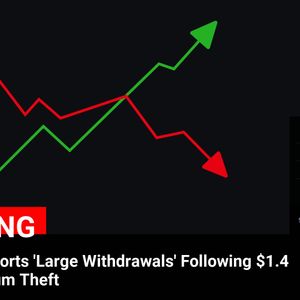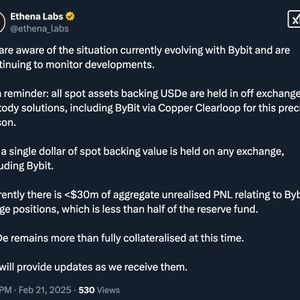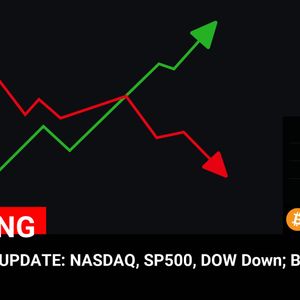Buckle up, crypto traders and Forex enthusiasts! The Reserve Bank of New Zealand (RBNZ) has just dropped a bombshell in the Forex market. In a widely anticipated move, the central bank has reduced its Official Cash Rate (OCR) by a significant 50 basis points, bringing it down to 3.75%. While expected, the implications for the New Zealand Dollar (NZD) and the broader Forex market are already rippling through the charts. Let’s dive into what this RBNZ interest rate decision means for your trades and the global economic landscape. Decoding the RBNZ Interest Rate Decision: What Happened? As predicted by most market analysts, the RBNZ concluded its February policy meeting by implementing a 50 bps cut to the OCR. This reduction, from 4.25% to 3.75%, marks a substantial 175 bps decrease since August 2024. But why this aggressive easing? Here’s the breakdown: Economic Slowdown Concerns: New Zealand’s economy entered a recession in Q3 2024, with GDP contracting more than expected. This economic weakness is a primary driver for the rate cut. Inflationary Pressures Easing: New Zealand’s annual CPI growth slowed to 2.2% in Q3 2024, moving closer to the RBNZ’s target range of 1% to 3%. This provides room for the central bank to stimulate the economy without overheating inflation. Forward Guidance: RBNZ Governor Adrian Orr had previously hinted at this rate cut, preparing markets for this move and emphasizing confidence in inflation easing. New Zealand Dollar’s Dramatic Reaction: NZD/USD in Freefall The New Zealand Dollar experienced an immediate and sharp negative reaction to the RBNZ interest rate decision . The NZD/USD pair witnessed a significant drop, currently trading around 0.5680, a 0.42% decrease on the day. This highlights the direct impact of central bank policy on currency valuation. Take a look at the currency heatmap to understand the broader impact: New Zealand Dollar Price Today (Percentage Change vs. Major Currencies) USD EUR GBP CAD AUD JPY NZD CHF USD 0.03% 0.09% 0.05% 0.12% 0.06% 0.40% 0.07% EUR -0.03% 0.05% -0.01% 0.07% 0.02% 0.30% 0.02% GBP -0.09% -0.04% -0.04% 0.03% -0.02% 0.26% -0.02% CAD -0.05% 0.00% 0.04% 0.07% 0.03% 0.36% 0.02% AUD -0.11% -0.07% -0.03% -0.08% -0.05% 0.29% -0.05% JPY -0.06% -0.03% 0.00% -0.02% 0.05% 0.37% -0.01% NZD -0.41% -0.35% -0.32% -0.31% -0.29% -0.33% -0.33% CHF -0.08% -0.03% 0.02% -0.02% 0.03% 0.00% 0.29% Note: This table illustrates the percentage change of the New Zealand Dollar against major currencies today. The NZD was weakest against the US Dollar. What’s Next for the Forex Market and the New Zealand Dollar? The crucial question now is: what does this OCR cut signal for the future? Here’s what to watch for: RBNZ’s Forward Guidance: Keep a close eye on the Monetary Policy Statement (MPS) and Governor Orr’s press conference. Any hints about further rate cuts or a slower pace of easing will significantly impact the New Zealand Dollar . Economic Projections: Updated economic forecasts from the RBNZ will provide insights into the central bank’s outlook and potential future policy moves. Market Expectations vs. RBNZ Stance: The swaps market anticipates the policy rate bottoming near 3.25% within 12 months, lower than the RBNZ’s projection of 3.55% by December 2025. This difference in expectations could lead to further volatility in the Forex market . Trading the Kiwi: Key Levels to Watch in NZD/USD From a technical perspective, Senior Analyst Dhwani Mehta notes potential trading levels for NZD/USD : Upside Potential: If buyers regain control, initial resistance is around 0.5814 (21-day SMA), followed by 0.5930 (November 2024 high) and then the key 0.6000 level. Downside Risks: Strong support is near 0.5660 (confluence of 21-day and 50-day SMAs). A break below this could trigger a further decline towards 0.5516 (February 3 low). Understanding the New Zealand Dollar: Key Drivers and Influences To navigate the volatility surrounding the New Zealand Dollar , it’s crucial to understand its fundamental drivers: New Zealand Economy: The overall health of the New Zealand economy, including GDP growth, employment, and inflation, is a primary determinant of NZD value. RBNZ Policy: As demonstrated by today’s event, RBNZ interest rate decisions and monetary policy are major drivers for the NZD. Rate hikes tend to strengthen the NZD, while cuts weaken it. Chinese Economy: China’s economic performance significantly impacts the NZD due to China being New Zealand’s largest trading partner. Dairy Prices: Dairy exports are a cornerstone of the New Zealand economy. Fluctuations in global dairy prices can influence the NZD. Global Risk Sentiment: The NZD often behaves as a ‘risk-on’ currency, strengthening during periods of global optimism and weakening during times of uncertainty. Stay Ahead of the Curve in the Forex Market The RBNZ interest rate decision serves as a stark reminder of the dynamic nature of the Forex market and the importance of staying informed. Central bank actions, economic data, and global events can trigger rapid shifts in currency values. For crypto traders diversifying into Forex or those watching macro trends, understanding these dynamics is essential for making informed decisions. To learn more about the latest Forex market trends, explore our articles on key developments shaping currency valuations and trading strategies.



















